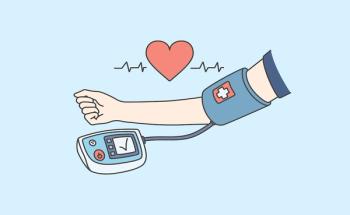
Race, Ethnicity, and Education Factor Into HPV Diagnosis Gap, Study Suggests
The findings of this study suggest possible poor communication about human papillomavirus infection (HPV), the authors said, since they do not align with epidemiologic evidence.
White women are twice more likely to be told they have human papillomavirus (HPV)
The study also found that women born in the United States were 2.1 times more likely to receive a HPV diagnosis from a physician than women born in a foreign country, and women with a college education were 2.9 times more likely than women without a high school degree.
The findings do not mean that White, US-born, or college-educated women are more likely to contract HPV. It’s a communication issue, the authors said.
“Despite epidemiologic data indicating higher HPV prevalence among those less educated and women of color, these groups were less likely to report ever being told they have an HPV infection than White women, and those with a college degree suggesting communication gaps among these subgroups about HPV infection that might exist,” the study authors said.
The study used data from 2015 to 2016 National Health and Nutritional Examination Survey (NHANES) to examine the prevalence and characteristics related to women in the United States who report ever being told they had an HPV infection.
The sample included 1669 females aged 18 to 59 (mean [SD] age 38.4 [11.96]) in the United States who report being told they had an HPV infection.
NHANES consisted of interviews conducted in participants’ homes and included demographic, socioeconomic, dietary, and other health-related questions followed by standardized physical examinations.
When weighted to reflect the entire US female population (75,107,170), around 11.5% women reported being told that they had an HPV infection, of which 60.9% were White, 13.0% were Black, and 10.3% were Mexican American. The majority (85.9%) were born in the United States. For women with genital warts, there was a significantly higher proportion that did not report HPV (56.7%) than did report HPV (43.3%).
The largest gaps in HPV infection diagnosis were linked to race and ethnicity. Mexican American women were 157% more likely to report HPV than Black women (odds ratio [OR], 2.573; 95% CI, 1.288–4.998; P < .05). The “other race” category showed 181% greater odds of reporting HPV than White women (OR, 2.828; 95% CI, 1.097–7.287; P < .05), and 286% greater odds than Asian women (OR, 3.861; 95% CI, 1.710–8.720; P < .05).
Regarding education level, women with a college degree or higher were 87% more likely to be told they had an HPV infection than those with a high school diploma or equivalent (OR, 1.871; 95% CI, 1.058–3.309; P < .05). They were also 259% more likely than women with some high school education without a high school diploma (OR, 3.592; 95% CI, 1.349–9.563; P < .05).
The authors said a potential limitation of this study is that it was based on self-report and subject to recall bias. At the same time, the findings also suggest poor communication about HPV infection, they noted.
“Each diagnosed HPV infection represents a ‘teachable moment’ and failing to adequately inform patients represents a missed opportunity to enhance a woman’s knowledge of HPV,” the authors said. “Despite the consequences of HPV infections, many women remain unaware of HPV and would benefit from being told of an infection.”
They also noted that health literacy is linked to improved adherence for both acute and chronic disease, stressing the importance that women know if they have ever had an HPV infection.
Further, understanding the characteristics of these women and who is and is not receiving a proper HPV infection diagnosis helps providers and public health officials identify potential communication gaps. “Understanding these associations can help clinicians and public health personnel to educational awareness programs that potentially improve screening and follow-up, decrease health disparities, and increase immunization rates,” the authors said.
Reference
Hung M, Su S, Hon E s, et al. Health disparities associated with females reporting human papillomavirus infection in the United States. Women’s Health Rep. Published online July 15, 2021. doi:10.1089
Newsletter
Stay ahead of policy, cost, and value—subscribe to AJMC for expert insights at the intersection of clinical care and health economics.








